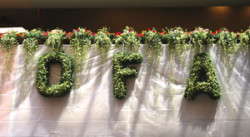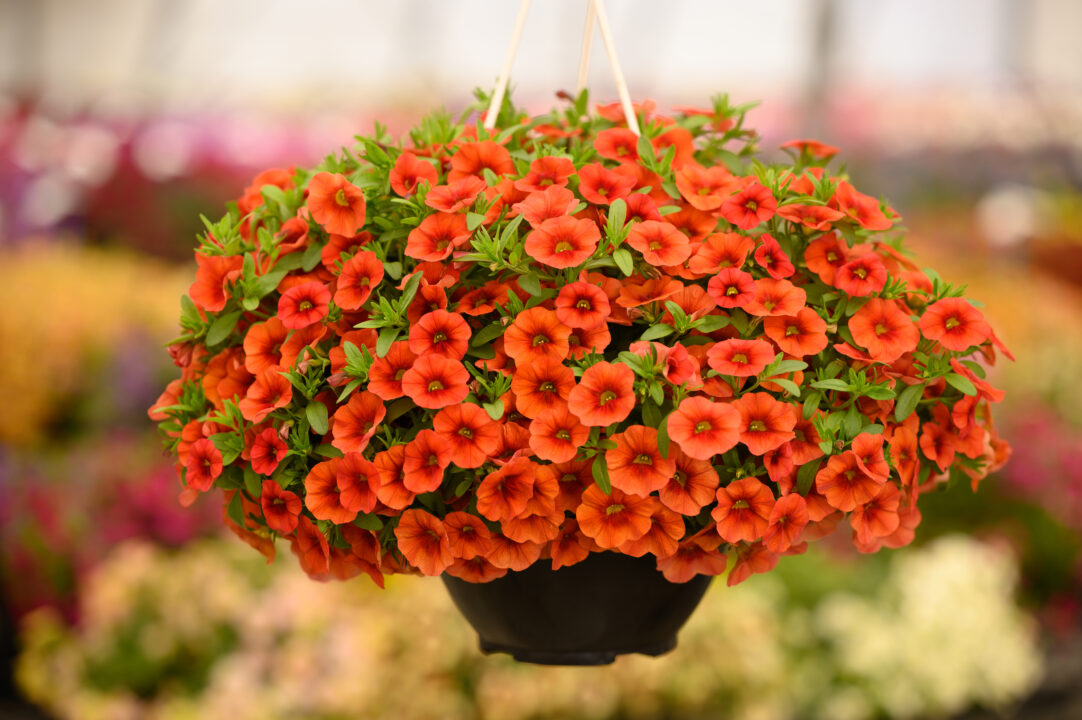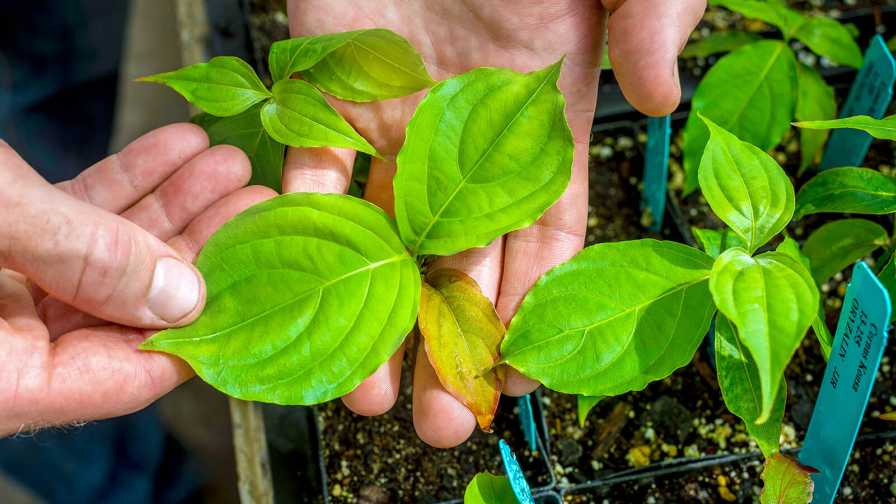Converging In Columbus

The event, held July 8-11, is organized and hosted by OFA — an Association of Floriculture Professionals. The organization was founded in 1929 with strong ties to The Ohio State University and has since grown to comprise 3,300 members in all 50 states and 30 countries. More than 77 percent are located outside of Ohio. The majority are growers. Programs are organized by 200 volunteers who actively participate on committees serving growers, garden centers, florists and interiorscapers.
Promoted as U.S. floriculture’s premier educational and trade show event, the OFA Short Course draws nearly 10,000 attendees each year from about 30 countries. While the three-day trade show spotlights more than 1,300 live goods and equipment and supply companies, attendees can choose from 120 educational sessions over four days. Social events after hours make Short Course the ultimate networking opportunity.
All The News
A few big announcements and celebrations happened at OFA Short Course. In order to provide a complete portfolio of branded products to consumers, Syngenta has purchased Conrad Fafard Inc. The news was announced at Short Course in a press conference attended by Syngenta’s Mark Walton, Keelan Pulliam, Alex Prohodsky, Chuck Buffington and Fafard’s Andy Fafard.
“We don’t intend to change the business model,” Fafard said. “The company will continue to operate as it is. We will grow and expand more quickly than we would have. Growers need a company that provides the products, services and knowledge that they need. This acquisition creates such a company.”
The companies moved quickly through the deal, as Fafard had been looking to sell.
Owners Eddy and Lela Kelly celebrated the 20th anniversary of their company, Dosatron International, at Short Course. Dosatron, headquartered in Clearwater, Fla., provides water-driven fertilizer injectors. For more on the celebration and the company’s products, visit www.dosatronusa.com.
The Peace Tree Farm family and the Gro ‘n Sell family, located only minutes apart in Bucks County, Penn., have joined forces to unite their market strengths — from propagation to packaging — and create a “From Start To Finish” outlet for the industry.
Short Course was one of the first times that visitors saw Paul Ecke Ranch exhibiting jointly with its newly purchased Oglevee.
Passport To The World
Ball Horticultural Co. and MasterTag have teamed up on the Plant Passport line, collectible plants from around the world. Plant tags are passport booklets with fun facts about the plants as well as care information. The line’s Web site lets plant geeks search for plants by point of origin. www.plantpassport.com.
Colors, Colors, Colors
Novalis showed off some new varieties, including ‘Lemon Daddy’ hydrangea, a sport of ‘Big Daddy’ with yellow-green leaves instead of the traditional dark-green. ‘Color Fantasy’ hydrangea also catches the eye with red mophead inflorescence and red foliage that lasts summer through fall.
P. Diddy Would Be Proud
What do you call your most dressed up, flashy product? Bling, of course, and Ball Seed’s Ball Bling program is an exclusive line of plant enhancements (paint and glitter) to spice up plants. Ball Bling was exhibited at Short Course decorating mums and poinsettias. The color and sparkle doesn’t wash off and won’t fade or burn plants.
Insulating Energy Costs
Launched at Short Course, Sunarc’s On-Demand Insulation and Shade System for double-layer, air-inflated polyethelyne greenhouses is liquid-foam based and has shown energy savings of more than 50 percent.
In cold weather, the system infuses R-15 liquid foam thermal insulation into the double-poly cavity. At sunrise, the foam dissipates and is rinsed away, enabling a crystal clear poly membrane each day. The same foam-based system is used in hot weather climates as a sun shade. For more information, call 877-448-2960 or visit www.sunarc.ca.
A Good Bet
The DiamondPoint program created by Proven Winners highlights the other euphorbia in the family — its new introduction ‘Diamond Frost.’ The program integrates ‘Diamond Frost’ with any beautiful red, burgundy or novelty poinsettia and will look great as an impulse buy at retail. When planted together from the liner stage, ‘Diamond Frost’ will take the path of least resistance, winding itself through the branches of the poinsettia, says PW spokeswoman Jeanine Standard. Find out more at www.pwcertified.com.
Disease Control
Bring on the science! Superior Aqua Agricultural Systems have been used for years in the row crop industry to control diseases. In the system, electrically generated copper ions are dispersed into a water system using specially designed copper electrodes. The ions have a natural attraction to algae, molds and fungi, removing them from water systems. Users have reported the system removes algae and molds in less than two weeks. For more, call 800-225-0119 or visit www.superioraqua.com.
Using The KISS Method
EZ Combos by Goldsmith are simple container recipes. Each contains two plants, with the same growing requirements, either in compatible or contrasting colors. Goldsmith also displayed its products planted in beds in a front yard setup.
Great Grower Sessions
The grower sessions were especially strong this year, zeroing in on the most pressing industry issues–falling profits, workforce issues and rising energy costs. Greenhouse production, advanced courses and crop diagnostics courses rounded out the program.
This year’s OFA Town Meeting was titled “Raising Prices — The Achilles Heel Of Our Industry.” Bill Swanekamp, Abe Van Wingerden, David Eastburn and Stephen Barlow were the panel, Lloyd Traven was the facilitator and the audience was full of emotion on the issue. Reasons for low prices? Here’s some of the common mentality:
–If there’s no crisis, there’s no reason to raise prices.
–There’s too much supply, so we can’t raise prices.
–Growers are more like farmers than bankers. This isn’t a business, it’s a way of life.
–We can’t walk away from the negotiating table when there are 17 guys waiting in line to get our business.
–I don’t know my costs per pot. Am I really losing money by not growing poinsettias, anyway?
A few ideas for raising prices: How about reinventing your product? Maybe a 4 1/2-inch pot is not the right size anymore. Some growers reported that they increased prices because of increased fuel costs, and few customers complained.
Plants are selling for 30 to 40 percent lower than they were in the 1980s. Growers thought it was all right to do so, because the profits were still there. But that began a race to the bottom. Either way, it’s better to put product in a Dumpster than slash prices. The net effect of lowered prices is a lowered profile for the entire industry.
Plants’ Secret Language
John Erwin, University of Minnesota, spoke on Applied Greenhouse Crop Technologies. A few tips from Erwin: essential greenhouse equipment includes light meters (inside the greenhouse, not on a weather station outside), infrared thermometers (for reading media temperature) and pH and soluble salt meters, to be read and analyzed on a weekly basis.
Erwin hinted at upcoming research on plant communications. If attacked by pests, plants give off a gas that warns other plants of an impending danger. And they give off different gasses depending on what’s attacking them. One of the chemicals is methyl-jasmonate, a chemical that is used in some perfumes. Also, look out for new gladiolus varieties from South Africa and cacti and succulents used as bedding plants in the Southern United States, as well as new potted plants.
Profitability Programming
“Even growers who are not currently forcing perennials should learn the principles and mechanics, as they are key to your potential to grow flowering perennials any time of the year,” explains Paul Pilon of Perennial Solutions Consulting. Discovering plants’ juvenility, vernalization, photoperiod and temperature requirements can help grower deliver a season-long supply of color to the market.
Pilon shared findings, in which an hour’s variance in photoperiod can be the difference between a flowering and non-flowering plant. For many varieties, as temperature increases, flower size decreases. In one instance, comparing plants grown at 63ËšF to 83ËšF, flower sizes were 2 inches and 0.6 inches, respectively. A rise in temperature can also reduce the number of flowers per plant. Pilon also introduced his new book, Perennial Solutions, to the Short Course crowd. The book is available at perennial-solutions.com.
The Fight Against Energy Costs
Erik Runkle, Michigan State University, gave his top tips for dealing with high energy prices. Plants develop in response to the average daily temperature they’re exposed to, so a positive DIF (warmer days and cooler nights) consumes less energy than a negative DIF (warmer nights than days) with the same average daily temperature. Other tips include starting with a larger plug and avoiding numerous gaps between crops. The added cost of PGR needed with close plant spacing is likely offset by the saved fuel costs.
Too Many Varieties?
With a plethora of new varieties being introduced at Pack Trials every year, growers, retailers and consumers are faced with the challenge of which plants to grow, sell and buy. Michigan State University’s Bridget Behe and Proven Selections’ John Gaydos talked to a captive audience about the negative effect of having too many choices. Behe referenced a book called “The Paradox of Choice” by Barry Schwartz, who found that an average grocery store offers 285 varieties of cookies, 21 of them being chocolate chip, 95 potato chip choices and 120 different pasta sauces. The conclusion was that having more choice causes more stress. Behe and Gaydos suggest simplifying choices by offering plantagrams or building displays or mannequins that make it easier for the customer.
More For Profits
Profits at retail are shrinking. What can growers to about it? Stan Pohmer shared some ideas in a session called “Partnering For Profits.”
–Take up a lean flow manufacturing process.
–Take on contract growers, or grow for a larger producer.
–Optimize logistics. Act as a freight, service or marketing provider for other growers.
–Collaborate with non-competing growers and share data, operating processes and vendor information. Operate as a buying group.
The panel at this year’s Grower Town Hall discussed the prospect of raising prices.










